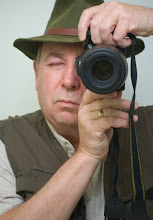What is Hogmanay?
Hogmanay is celebrated on New Year's Eve, every year, usually in a most exuberant fashion in Scotland as hundreds of thousands of revellers take to the streets to see in the New Year. In the cities of Glasgow and Edinburgh it has become a huge ticketed festival. Celebrations start in the early evening and reach a crescendo by midnight. Minutes before the start of new year, a lone piper plays, bells chime at the turn of midnight, lots of kissing, and everyone sings Auld Lang Syne. And then there is more kissing.
Elsewhere in Scotland, particularly in more remote parts, customary first footing and Scottish dances, or ceilidhs (pronounced "kayli"), take place. For centuries, fire ceremonies -- torch light processions, fireball swinging and lighting of New Year fires -- played an important part in the Hogmanay celebrations. And they still do.
Did you have a First Footing?
What is a First Footing? Traditionally, it has been held that your new year will be a prosperous one if, at the stroke of midnight, a "tall, dark stranger" appears at your door with a lump of coal for the fire, or a cake or coin. In exchange, you offered him food, wine or a wee dram of whisky, or the traditional Het Pint, which is a combination of ale, nutmeg and whisky.
It's been suggested that the fear associated with blond strangers arose from the memory of blond-haired Viking’s invasions and pillaging Scotland circa 4th to 12th centuries. What's more likely to happen these days is that groups of friends or family get together and do a tour of each others' houses. Each year, a household takes it in turn to provide a meal for the group. In many parts of Scotland gifts or "Hogmananys" are exchanged after the turn of midnight.
(The above paragraphs adapted from
www.hogmanay.net where you can find out more about these Scottish traditions.)







No comments:
Post a Comment